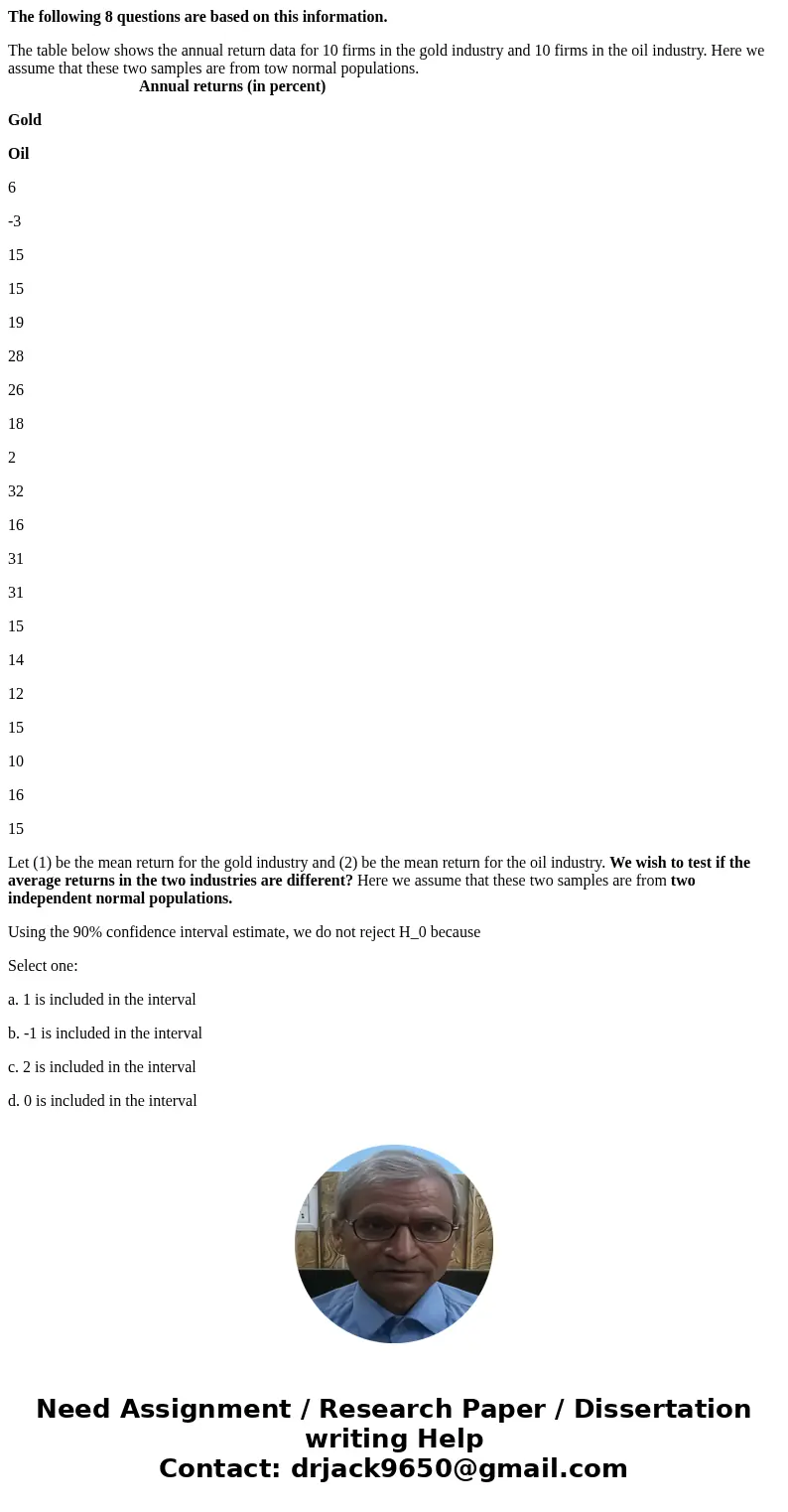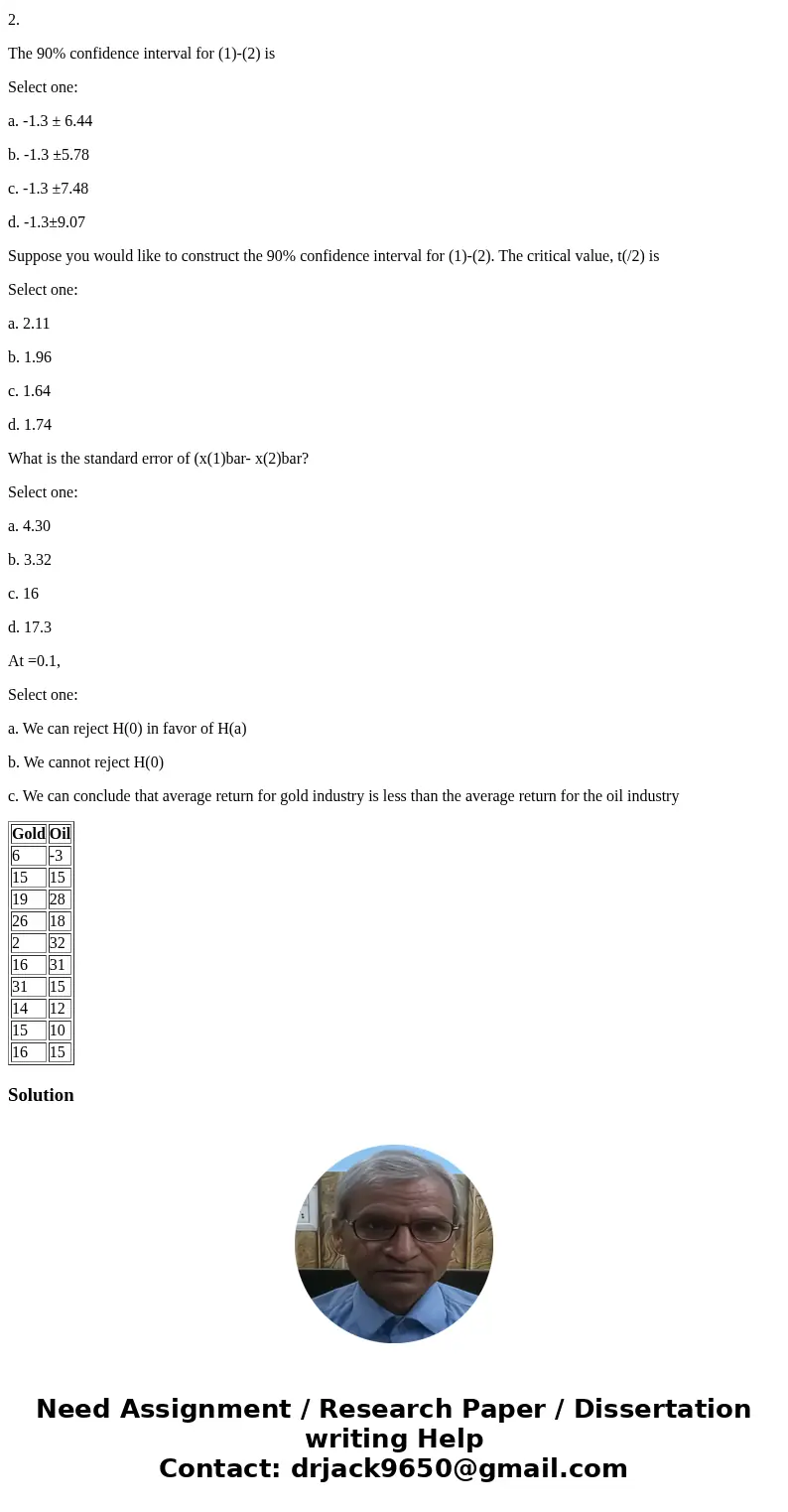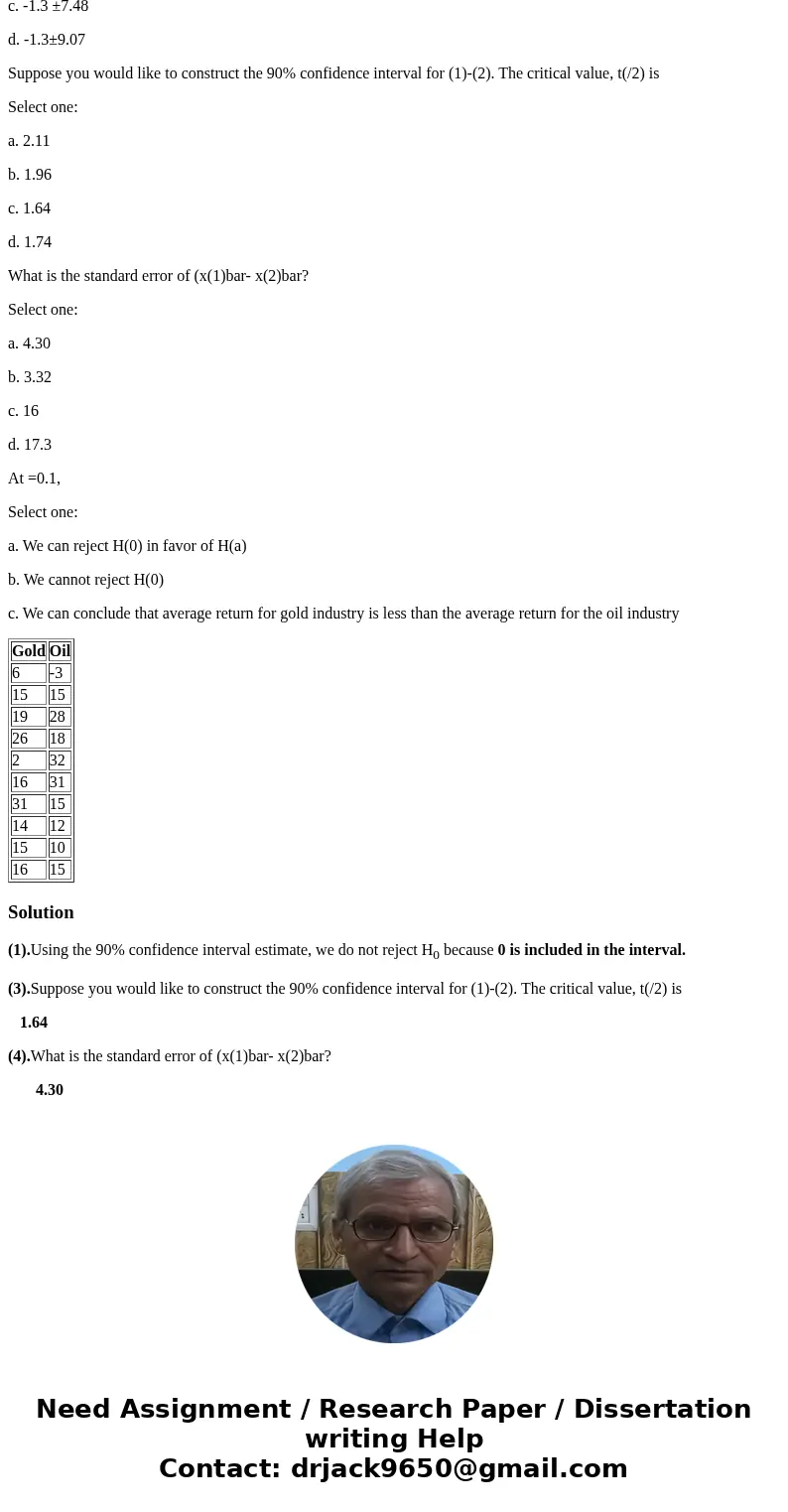The following 8 questions are based on this information The
The following 8 questions are based on this information.
The table below shows the annual return data for 10 firms in the gold industry and 10 firms in the oil industry. Here we assume that these two samples are from tow normal populations.
Annual returns (in percent)
Gold
Oil
6
-3
15
15
19
28
26
18
2
32
16
31
31
15
14
12
15
10
16
15
Let (1) be the mean return for the gold industry and (2) be the mean return for the oil industry. We wish to test if the average returns in the two industries are different? Here we assume that these two samples are from two independent normal populations.
Using the 90% confidence interval estimate, we do not reject H_0 because
Select one:
a. 1 is included in the interval
b. -1 is included in the interval
c. 2 is included in the interval
d. 0 is included in the interval
2.
The 90% confidence interval for (1)-(2) is
Select one:
a. -1.3 ± 6.44
b. -1.3 ±5.78
c. -1.3 ±7.48
d. -1.3±9.07
Suppose you would like to construct the 90% confidence interval for (1)-(2). The critical value, t(/2) is
Select one:
a. 2.11
b. 1.96
c. 1.64
d. 1.74
What is the standard error of (x(1)bar- x(2)bar?
Select one:
a. 4.30
b. 3.32
c. 16
d. 17.3
At =0.1,
Select one:
a. We can reject H(0) in favor of H(a)
b. We cannot reject H(0)
c. We can conclude that average return for gold industry is less than the average return for the oil industry
| Gold | Oil |
| 6 | -3 |
| 15 | 15 |
| 19 | 28 |
| 26 | 18 |
| 2 | 32 |
| 16 | 31 |
| 31 | 15 |
| 14 | 12 |
| 15 | 10 |
| 16 | 15 |
Solution
(1).Using the 90% confidence interval estimate, we do not reject H0 because 0 is included in the interval.
(3).Suppose you would like to construct the 90% confidence interval for (1)-(2). The critical value, t(/2) is
1.64
(4).What is the standard error of (x(1)bar- x(2)bar?
4.30



 Homework Sourse
Homework Sourse